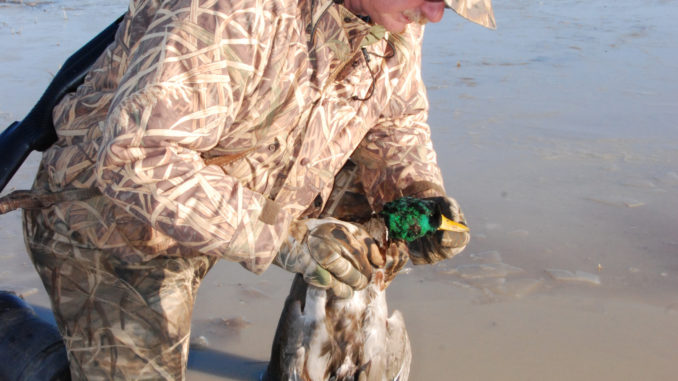
So you were lucky enough to draw a permit this year, here’s how to make the most of your public duck hunt.
Back in October, you and a group of your duck hunting buddies — or maybe it was a couple of family members — obtained an application from the S.C. Department of Natural Resources for one of their annual draw duck hunts.
Maybe you applied some type of strategy in your choices for the locations you put on the application. Maybe you and your group had accumulated several preference points as a reward for not being drawn in years past. Maybe it was just a chance to hunt somewhere you rarely get to hunt.
For whatever reason — strategy or perhaps just sheer beginner’s luck — your application was selected during the random computer drawing, and sometime around the first of this month, you’ll have a big grin on your face as you walk back from the mailbox, relishing a chance at the best $50 duck hunt in the land.
Public duck hunting on state-controlled property can be broken down into Category 1 and Category 2. Category 2 waterfowl areas are available on a first come-first serve basis and are generally open only one or two days a week to reduce hunting pressure. Likewise, little or no management efforts, i.e. planting or management of duck-specific crops, is performed on these areas; most are just naturally conducive to holding ducks.
Category 1 WMAs, of which there are only 10 in the state, are broken down into 15 hunt units and are available for public hunting by random selection only. Interested parties receive applications by mail or internet in late September, apply before the deadline sometime in late October and receive notification of the results of the draw in early November.
Category 1 locations are intensely managed by SCDNR. Fields are plowed, planted and flooded, or natural food sources are cultivated and managed through water-level manipulation. In addition, most offer the use of pre-fabricated blinds and most importantly, pre-scouting advice and recommendations from wildlife personnel who decide the day before the hunt which areas are holding birds.
While it seems a party-limit day would be a walk in the park, the weather and wildlife have a lot to say about hunter success, both of which are out of the control of SCDNR. There are however, a few tips that can be learned by the intrepid waterfowler that can help increase your chances of success.
Dean Harrigal, SCDNR’s waterfowl project coordinator, has seen many hunters come through draw hunts over the years, some faring better than others under identical conditions. Harrigal, along with Greg Lynch, waterfowl coordinator for the upper coast, has some advice for hunters looking to gain every advantage to make the best of this year’s hunt.
• Listen to what the managers tell you — Hunters arrive sleepy-eyed and less than attentive at the 4:30 a.m. roll call or may be so enthralled by the hunt that they miss out on some important information — the scouting advice from the managers — in the midst of the pre-hunt briefing.
“These guys live and work here, and they know what the ducks are doing,” said Harrigal. “They’ve been watching these birds come and go since before the season started, and most can even tell you which direction they’ll come from, what they’ve been eating for the last couple of days, and even what species of birds you’re most likely to see. Listen to what the manager has to say!”
• Be mobile — Some hunters may feel more comfortable hunting from a provided blind, and some may have physical limitations that prevent them from hunting anywhere but in the blind,. While they’re still good locations to hunt, conditions may dictate moving from the blind if birds become “blind shy.”
“To kill ducks, you have to be where they want to be,” Harrigal said. “During the pre-briefing, you’ll be instructed on which area you will be hunting and how close to the next party you’ll be. You may start out in the blind, but if ducks are working an area that’s within the boundaries we’ve established for your party to hunt — you may need to go to them.”
Lynch, whose areas of responsibility include the Santee Coastal Reserve, Santee Delta, and Samworth WMAs. agreed.
“Being mobile is a big, big factor in killing ducks,” he said. “If you see ducks laying down on the other side of your field, go over there and kick them up and get hidden in that area. Either those ducks will be back or others will come in there behind them, because something about that area — might be a wind break or a new food source that’s become available — will bring them right back to it.”
• Bring only what you need — Decoys may be provided for your use on many WMA draw hunts. If so, you may not want to bring many, if any, of your own decoys to the hunt. Chest waders are highly recommended for all of the Category 1 hunts. Also, pack light enough that if you need to move you can do it quickly.
“Pack light,” said Lynch, “especially late in the season when birds get real blind shy. You may be moving a lot.”
“It’s guerrilla hunting,” said Harrigal. “Be prepared to tote what you bring. It’s hard to be mobile and move to the birds if you have two bags of decoys, a blind bag, a stool, and a bunch of other gear.”
• Use decoys as needed — Decoy are necessary to bring ducks into gun range. Still, many hunters tend to overdo it, and both Harrigal and Lynch can attest to the effectiveness of less rather than more.
“In the areas where decoys are provided, my suggestion is to use those around the blind,” Harrigal said. “Then, if you want to bring a few decoys of your own, save them for later if you have to move. It’ll save time.”
“These birds roost here, feed here and loaf here, so they don’t go very far,” Lynch said. “You’re welcome to bring your own decoys, but hunters tend to bring way too many. I can’t think of a situation where a large spread would be necessary. Six decoys is more than enough.”
“Everybody brings a robo-duck” Harrigal said. “I’m just not that convinced that they’re that beneficial on our properties. Besides being cumbersome to carry, the ducks have seen them at every stop between here and Canada.” Harrigal is a bigger fan of old school techniques for adding motion to a decoy spread.
“A simple jerk cord rig will put ripples on the water, which can make a difference on a bright sunny day. Plus, it works better with the whole concept of moving quickly.
• Consider bringing a retriever — Retrievers can be a help or a handicap a duck hunter, depending on the attitude of the dog and the owner’s ability to control him.
“Retrievers reduce crippling loss, but the owner needs to be able to control the dog with either hand, voice or electronic controls,” Harrigal said. “You don’t want to bring a dog that runs off and might disrupt a hunt on an adjoining pond.”
With all but three of the Category 1 WMAs residing in alligator country, the timing of the hunt and recent weather may have a bearing on the safety of the dog.
“Alligators do reside on our coastal properties,” Harrigal said. “The rule of thumb is that gators don’t actively feed in water below 72 degrees but I’d prefer the water to be in the low 60s. Plus, if we have an unseasonable warm spell the week (before) to your hunt, gators will be out sunning, and you don’t want the dog to chance upon one on a retrieve.
“Call ahead and get the opinion of the manager, but the best thing to do if you are concerned is leave the dog as home. Most of our hunt ponds are shallow enough to wade in after your ducks.”
• About that call you’re wearing — Harrical and Lynch agree that the biggest mistake hunters make is callling too much.
“It’s better not to have it than overuse it,” said Harrigal. “We hear mallard calls coming from all over the property, and the truth is, a mallard call won’t call every bird in the marsh. A pintail whistle, widgeon or teal call is probably more useful than a mallard call on all except Broad River, Santee Delta and Beaverdam, where mallards are more common.”
“Teal are the No. 1 bird in the bag across the coast, I’d definitely go more with a teal call,” said Lynch.
• Take advantage of the ducks at hand – While the Category 1 hunt areas host numerous species of birds during a season, there’s no guarantee of finding one or two preferred species on a draw hunt.
“Enjoy the hunt,” said Harrigal. “If you go with the idea of looking for only one species of duck, you may cheat yourself out of a good hunt.”
“There is the possibility of seeing a number of different types of ducks, especially at the Santee Coastal Reserve, but these birds migrate in waves and by species. Yeah, we get some good numbers of pintails, but we don’t have them all the time. Ask the DNR staff what they’ve been seeing and base your hunt on that.”
• Obey the rules — Both Category 1 and some Category 2 waterfowl areas have WMA-specific rules. Hunters are limited to 25 shells, and hunts are over at specified times. In addition, all published waterfowl regulations also apply. Among those: the required use of a plug if a gun is capable of holding more then three shells, non-toxic shot is required and bag limits of ducks apply. These rules are enforced.
“SCDNR law enforcement officers check our draw hunts just as they would any type of waterfowl hunting,” said Lynch. “Read over your applications thoroughly, the rules are clearly stated there and they are reviewed again at the pre-hunt meeting. DNR law enforcement officers have made cases on draw hunts — the rules are enforced.”
More tips….
Here’s a few more tips based on the author’s experience with draw duck hunts over the years.
• In areas where a boat is provided, take the paddle with you when you leave the boat. Paddles make for good wading staffs, and typically the reason the boat is provided is because the bottom terrain is boggy or there are deep holes.
• If you think you might need to move locations within an area, don’t wait. You’ll know by 7:30 a.m. if the ducks are avoiding the blind. Pick up and go. Waiting until mid-morning to move may cost you in terms of ducks.
• A shotgun-shell belt is invaluable, especially on a draw hunt. Belts allow you to wear your ammo while keeping your hands free. Popular neoprene shell belts hold 25 shells, the number you’re allowed to take on a draw hunt. Having the belt also helps you keep an accounting of how many shells you have left.
• Check your gear before the hunt. Make sure you bring a clean, well-maintained shotgun with which you are familiar and have shells for. Unlike commercially guided hunts, there are no loaner guns, on-site gunsmithing or shells available for purchase. Same situation applies for waders. A wise man once said that a gun and boots are the only two pieces of equipment you can’t do without on a hunt. Make sure you have both and they work.
• The application will tell you if decoys are provided. If they aren’t, bring a dozen of your own. It just doesn’t feel like a duck hunt if you aren’t stumbling around before daylight putting out decoys, which will be of more use the later in the season your hunt is scheduled. However, nine times out of 10, ducks are killed pass shooting as they come in to feed.
• Pick up breakfast the night before the hunt. Report times for the hunt are early, and hunt locations are often remote. Even if you could find a gas station, convenience store, or fast food restaurant on the way to the hunt, it won’t be open.
For boaters only
Two WMAs involved in draw-only hunts — Santee Delta West and Bear Island West — require hunters to provide their own transportation. This means they’ll have to have some type of boat to get either to the hunting area or out to the blind.
“I’d suggest not bringing a large boat to Bear Island,” said biologist Dean Harrigal. “The launch locations into our ponds are primitive — makeshift dirt ramps — and it would be real easy to get a big, trailered boat stuck either putting in or taking out.”
The Santee Delta West unit offers a better, paved ramp to access the hunt area, but similar to Bear Island, the boat is used more for transportation than hunting.
“Don’t bring a blind to the west unit. Boats are used to run the ditch that connects our fields. Once you make your way around the ditch to the pond you’ve drawn, it’s better to tie the boat up and wade in to hunt,” said Lynch.
A trolling motor or small outboard motor is plenty to navigate the Santee Delta ditch access; there’s no public water to be crossed. Hunters who bring larger boats are better served by raising the outboard and using the trolling motor to get to their spot.

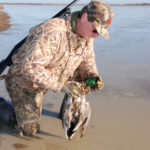

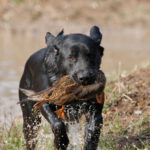
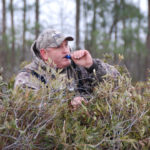
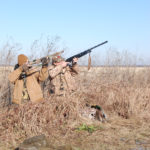
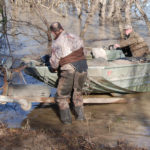



Be the first to comment